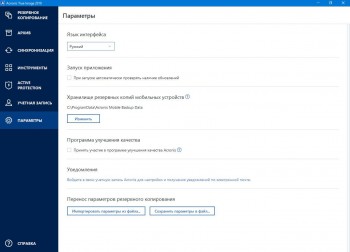 How to create Linux-based bootable media in Acronis True Image 2014. True Image Cloud, Acronis True Image 2015, Acronis True Image 2014, True Image 2013. For general information on the standalone version of Acronis software see. Save it on your hard drive as an ISO image or create media on a flash drive. Acronis True Image Bootable ISO is an integrated backup and recovery software that ensures the security of all of the information on your PC. It can back up your documents, photos, email, and selected partitions, and even the entire disk drive, including operating system, applications, settings, and all of your data.
How to create Linux-based bootable media in Acronis True Image 2014. True Image Cloud, Acronis True Image 2015, Acronis True Image 2014, True Image 2013. For general information on the standalone version of Acronis software see. Save it on your hard drive as an ISO image or create media on a flash drive. Acronis True Image Bootable ISO is an integrated backup and recovery software that ensures the security of all of the information on your PC. It can back up your documents, photos, email, and selected partitions, and even the entire disk drive, including operating system, applications, settings, and all of your data.
Hello, I tried to make my USB Pen to boot Acronis and kept getting 'Missing MBR-helper' error at the boot (see Tried several PCs and USB drives. After some hours I gave up on grub4dos and found a work-around. Insert you USB Drive 2. Download and run YUMI (- it will do ALL the formatting on the USB drive, install Bootloader etc.
Check 'Format x: Drive (Erase Content)?' If you need to 4. Scroll to the bottom and select 'Try an Unlisted ISO' 5. Browse and load your Acronis.iso and click on 'Create'. If you want to add more.ISOs later (Hiren, GParted, you know stuff like that), just re-run the tool, OR the easier way: copy your ISO onto the USB Drive and edit the file 'menu.lst'.
Everyone who even dares to read this posting won't need any further explanation how to do so. Hope this helps for everyone who keeps struggling with booting off USB Drives. (Mod's might even add a link to this thread in MudCrab's postings regarding this issue). Hi Mathew, Just FYI, but this post is 5 years old. Acronis has it's own rescue media builder directly in the app that can be used to burn directly to CD/DVD, create an.iso, a.wim, or directly to a bootable USB flash drive as well. Of course, if you're using an older version, this may not give you what you're looking for, but Acronis 2016/2017 support this and create media for both legacy and UEFI systems as well as 32-bit and 64-bit.

The downside with yumi (I used to use it a lot - then went to Easy-2-boot - like it even better), is that they are only legacy/MBR boot capable. For newer systems that use UEFI and GPT disks, this presents a problem. Sure, many systems support UEFI and CSM/ legagcy mode, but not all. Also, and more importantly, how your bootable media is created and is booted, may determine how it functions. Example: If your current OS is legacy/MBR and you get a new SSD that is formatted as GPT from the manufactuer.

Even if your bios supports GPT, if you try to install Windows 'fresh', Windows will tell you there is no suitable drive available. In order to use a GPT disk for Windows installation, you must have UEFI enabled and boot to the media in UEFI mode. Likewise, if your system is setup for UEFI/GPT, but have a MBR formatted disk and try to install Windows to it, Windows will also say there is no suitable disk if you booted the installer in UEFI mode.
The same applies when RECOVERING (backup really doesn't matter though) with Acronis media. If you start the recovery in legacy/CSM mode, it will restore the OS as legacy. If you start the recovery in UEFI mode, it will restore it in UEFI mode.
This can cause boot issues as you can never go from UEFI to legacy and can only sometimes go from legacy to UEFI when recoverying a backup. Rule of thumb is to match the bootable recovery boot method with that of the install method of the OS that was backed up. Clear as mud? Check out these screenshots.